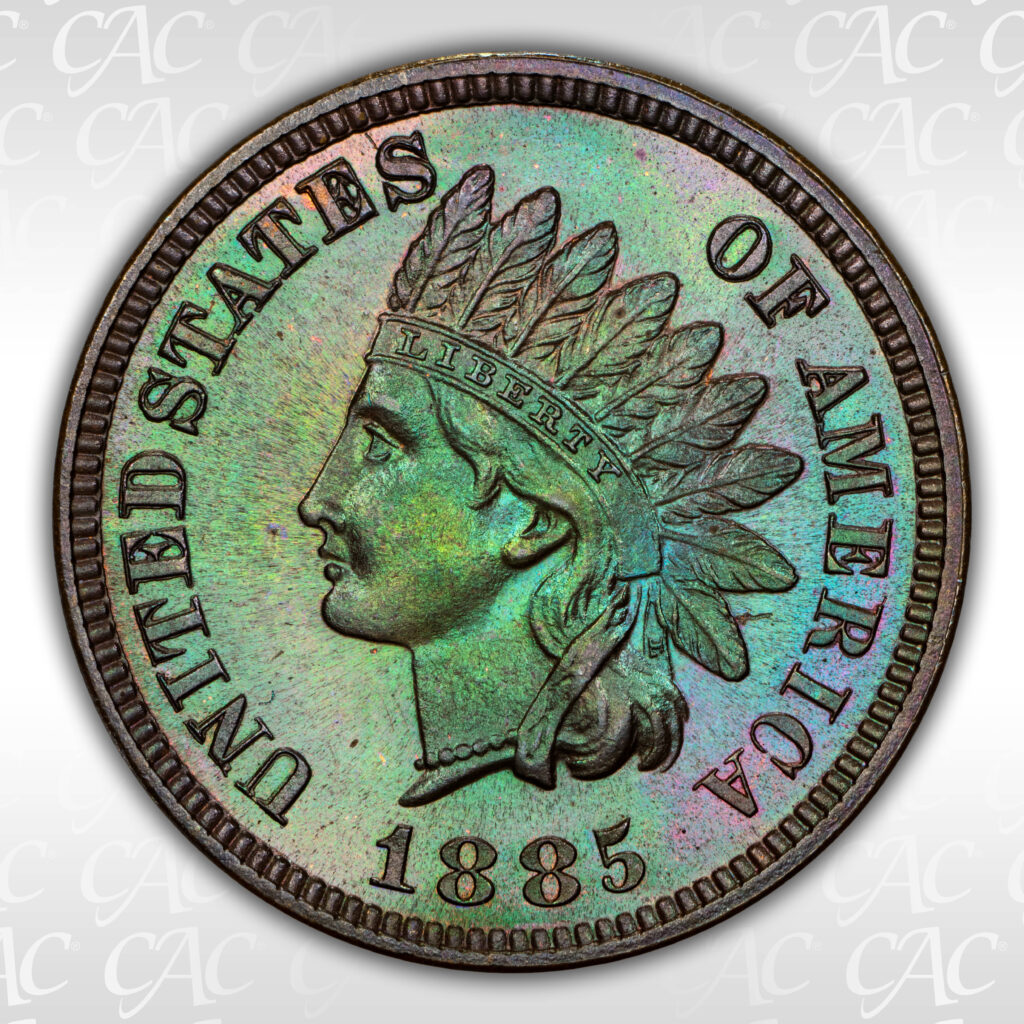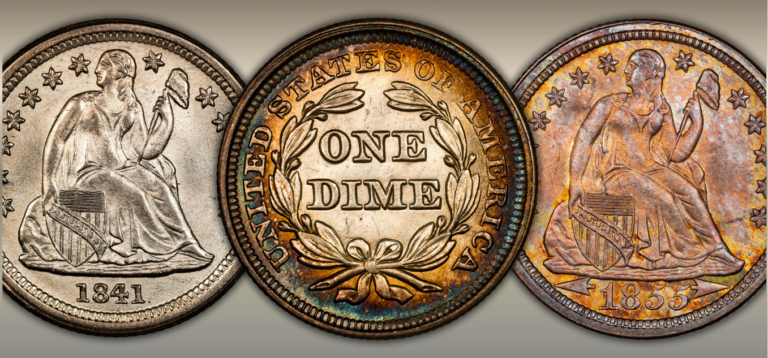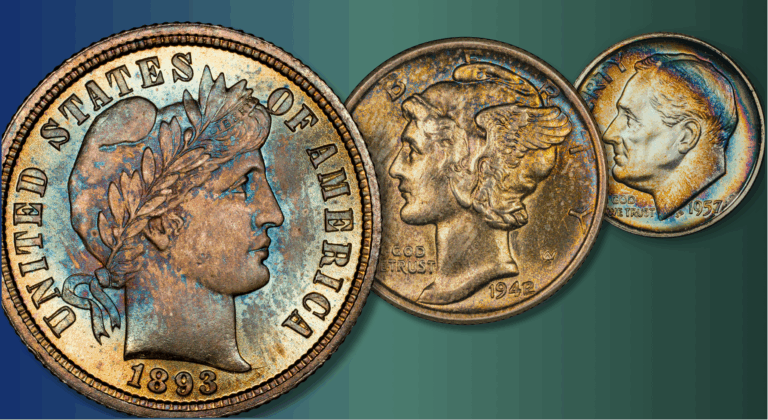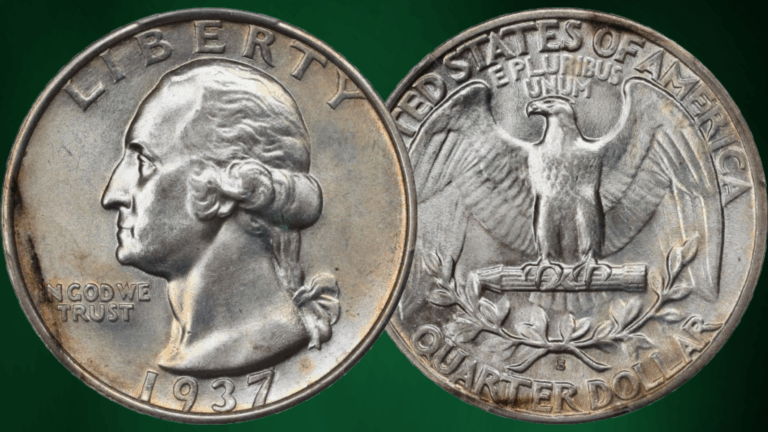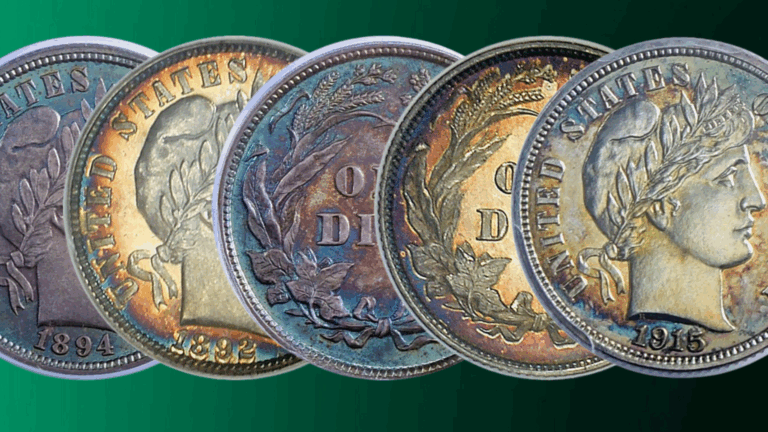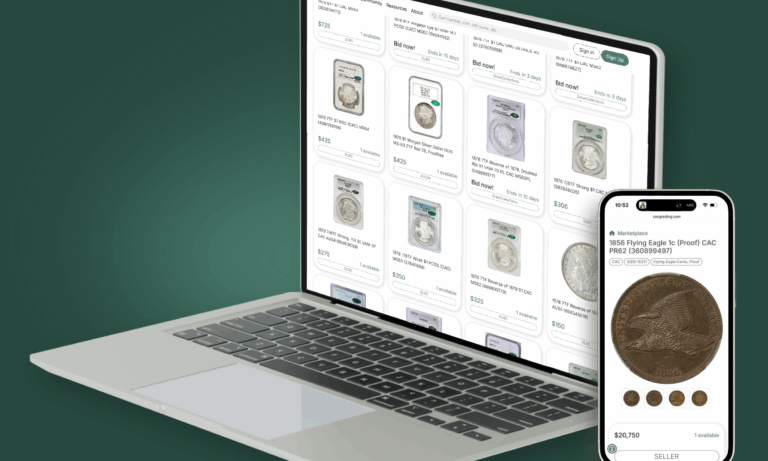by Shannon Rajkitkul
Toned Indian Head Cents
Toned Indian Head Cents have become one of the most sought-after series in numismatics today, particularly for their proof-toned specimens. I would rank toned proof Indian Head Cents at a Toned Demand Factor of 8/10, as there is a strong collector base competing for attractively toned examples. Despite their desirability, these coins remain relatively affordable, typically ranging from $1,000 to $4,000. Given their exceptional eye appeal, vibrant toning, low mintage, and accessible price point, it is easy to understand their enduring popularity.
While today’s market for toned proofs is strong, this series has undergone historical shifts that have influenced its collectability. In this analysis, we explore these changes and discuss essential do’s and don’ts when dealing with toned Indian Head Cents.
Indian Head Cents – A Historical Review
Minted from 1859 to 1909, Indian Head Cents (IHCs) have captivated collectors for generations. However, toned proof issues have historically received less attention compared to their business strike counterparts—except for a few key dates, such as the renowned 1864-L Proof. Most business strike Indian Head Cents rarely exhibit toning, making the market for proof-toned examples particularly robust today.
A major turning point came in 1878, when the Philadelphia Mint adjusted its policies, officially categorizing and counting proof pennies as currency. By the end of each year, any unsold proof cents were released to the public, allowing dealers to purchase them in bulk. Many of these coins were stored in mint tissue or sulfur-based envelopes, which contributed to the stunning toning seen on examples today.(1)
The 1930s witnessed the dispersal of a major hoard of toned proofs. Renowned dealer Abe Kosoff, who played a key role in the numismatic market from the 1930s to the 1980s, wrote about this in his 1970s Coin World column and later in his book, Kosoff Remembers. He recounted how one of his earliest transactions involved acquiring thousands of iridescent proof-toned Indian Head Cents from 1878 to 1909, paying just a few cents apiece and reselling them for a few dollars each. The profitability of this venture fueled his passion for the coin business.(2)
The origins of these hoards trace back to estates of prominent 19th and early 20th-century dealers, including David Proskey and A.M. White, who had amassed large quantities of proof Indian Head Cents over their lifetimes. (3)

Toning Categories of Indian Head Cents
Toned proof Indian Head Cents generally fall into four primary toning categories. While each category has distinct characteristics, many coins exhibit a blend of multiple toning patterns, which is often seen as a positive attribute.
Green Toning
Green-toned proof Indian Head Cents are among the most coveted by collectors. These coins often display a vibrant sea-green to Christmas-green obverse, frequently paired with pinkish-magenta hues on the reverse. This particular toning combination is highly desirable and can command premiums of up to 100% more than standard examples.
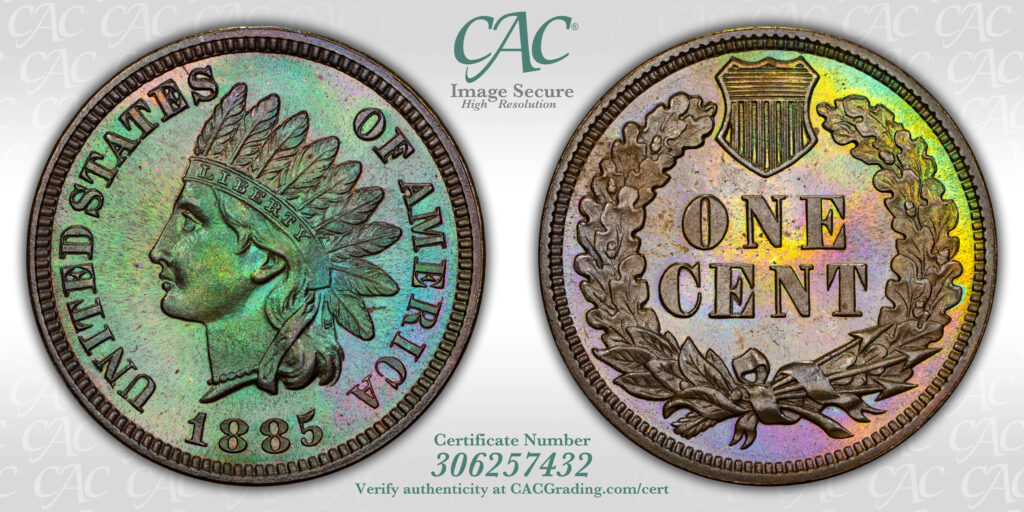
Images courtesy of The Penny Lady.
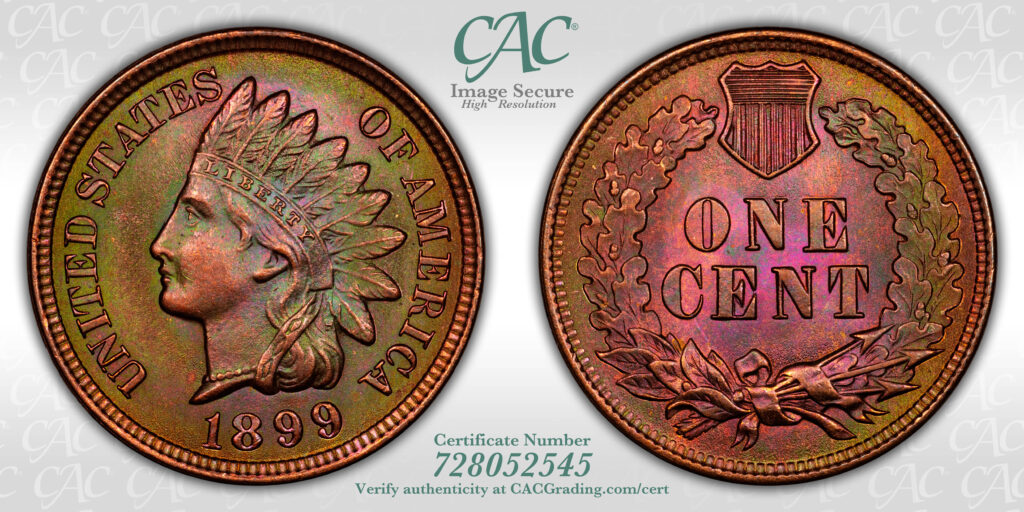
Images courtesy of CACG.
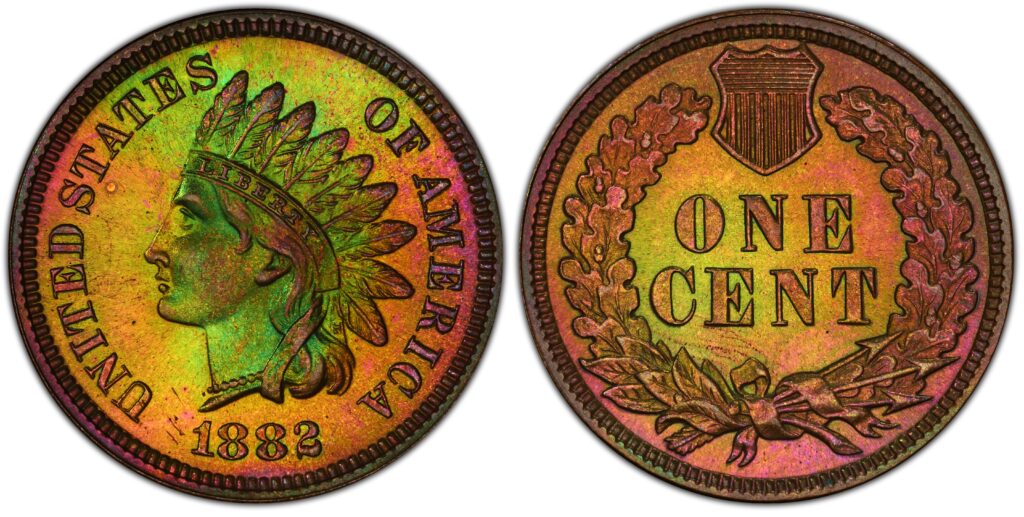
ex. Daryl Haynor Collection
Images courtesy of Daryl Haynor.
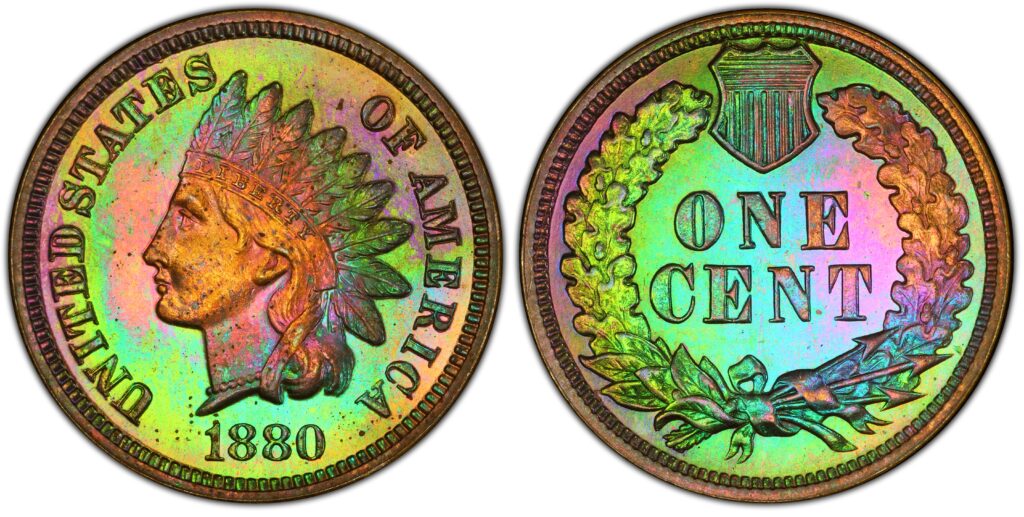
Images courtesy of Paradime Coins.
Rainbow Toning
Rainbow-toned Indian Head Cents are exceptionally rare. This scarcity is due to both the unique properties of the metal and the way these coins were stored over time. As a result, fully rainbow-toned examples rarely appear at auction, making them one of the most undervalued toning types within the series and can fetch large premiums.
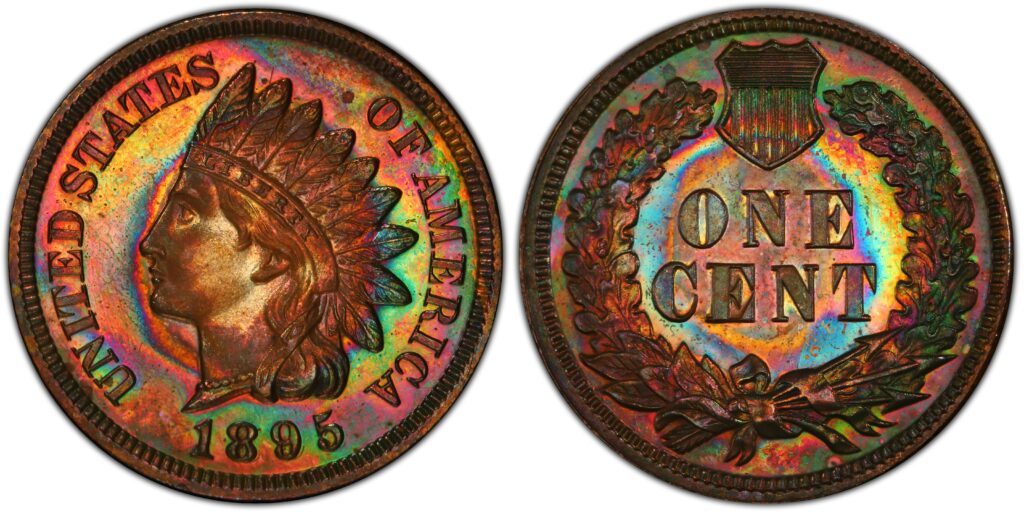
Images courtesy of Sublime Cents.
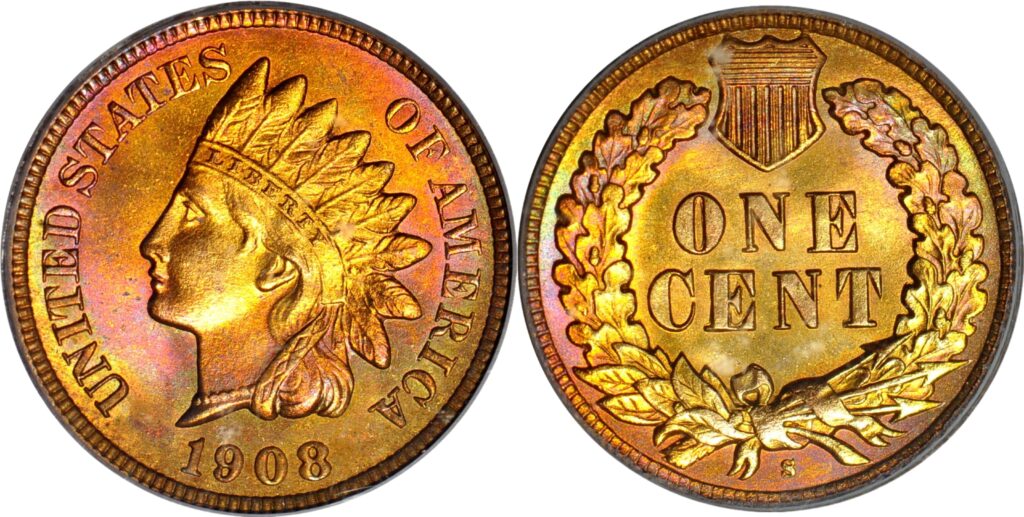
Images courtesy of Eagle Eye Rare Coins.
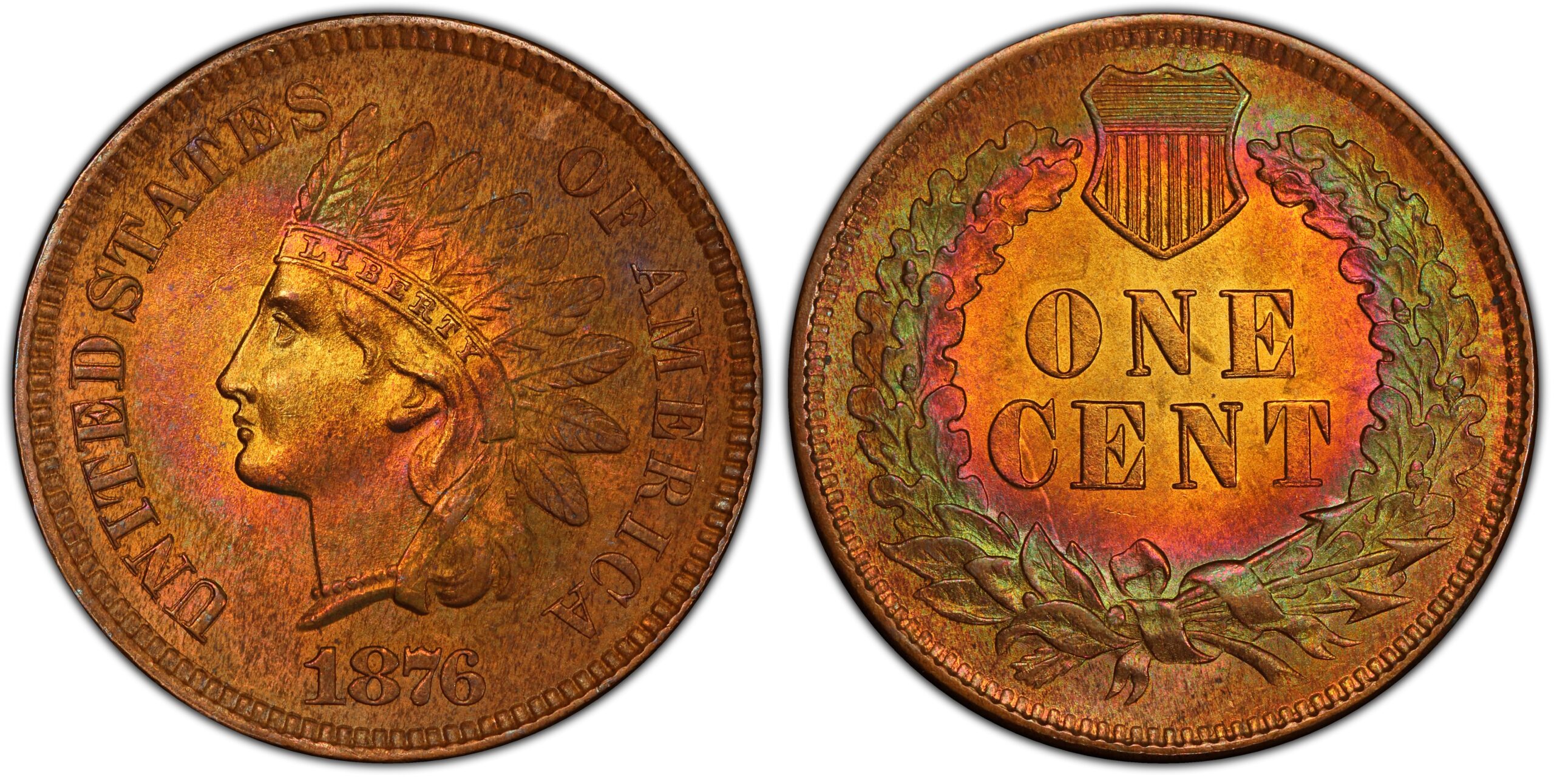
ex. Daryl Haynor Collection
Images courtesy of Daryl Haynor.
Blue Toning
Blue-toned proofs are the most commonly seen toning type in this series. However, collectors should closely examine whether the toning is dull or vibrant, as well as whether it is original and market-acceptable. The premium for blue-toned coins varies significantly, so utilizing auction records and the CAC Price Guide is highly recommended when assessing value.
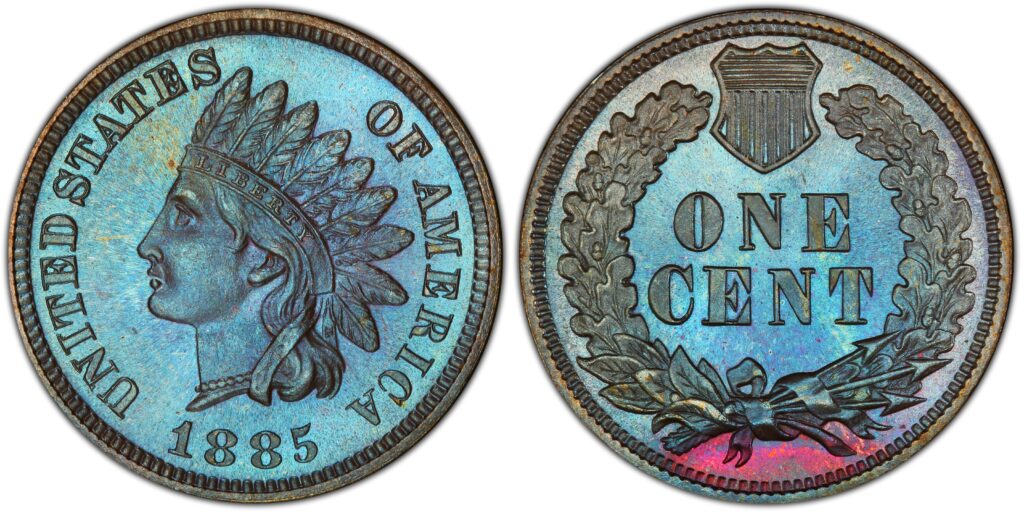
ex. Perfection 2
Images courtesy of Heritage Auctions.

Pink & Magenta Toning
Pink and magenta toning remains highly desirable among toned proof collectors, second only to the coveted green hues. These coins offer excellent value in today’s market due to their striking eye appeal. While premiums for this coloration are relatively modest, collectors can expect to pay a premium ranging between 20% to 40% over standard examples.
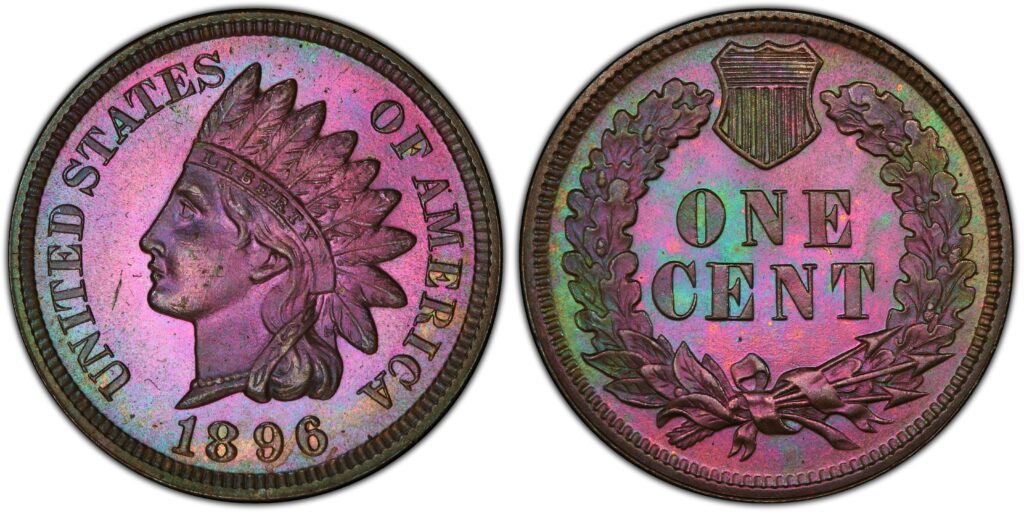
Images courtesy of Stack’s Bowers.
Pro Tips for Collecting Toned Indian Head Cents
✅ Pre-1878 toned proofs are exceptionally rare – If you find one with attractive toning, it is highly desirable.
❌ Do not overpay for blue-toned proofs – While appealing, these are relatively common. Always verify originality and seek CAC-approved coins when possible as some especially with blue or red and blue combination can come with Questionable Toning.
✅Rainbow-toned proofs are an excellent investment – These remain undervalued and should be pursued when available.
✅Consider assembling a complete proof-toned date set – A full collection of attractively toned Indian Head proof cents is an impressive and rewarding endeavor.
References
(1)(2)(3) Longacre’s Ledger. “Blue Toned Proof.” Rick Snow. Vol. 24.3. January 2016.
About the Author
Shannon is the owner of Paradime Coins, a prominent numismatic firm that deals in rare U.S. collectibles. Holding an MBA from the University of Oxford, Shannon has researched extensively on diversification, and brings expertise into investment portfolios through non-traditional assets.
If you have any questions about this article or have any attractively toned CAC approved or CAC graded Indian Head Pennies for our next article please email to shannon@paradimecoins.com.
